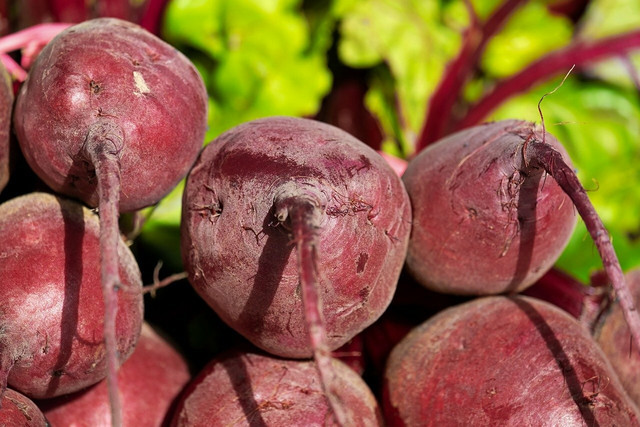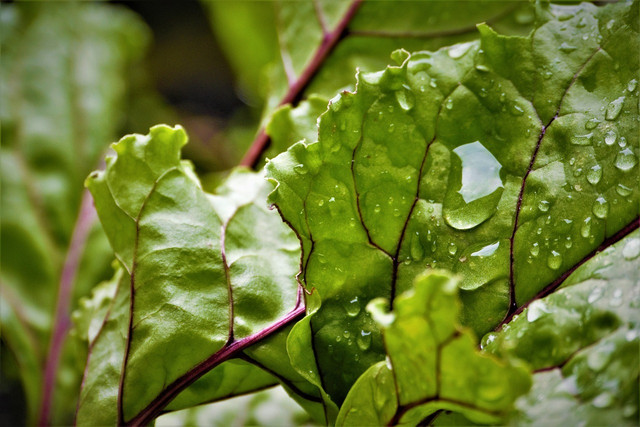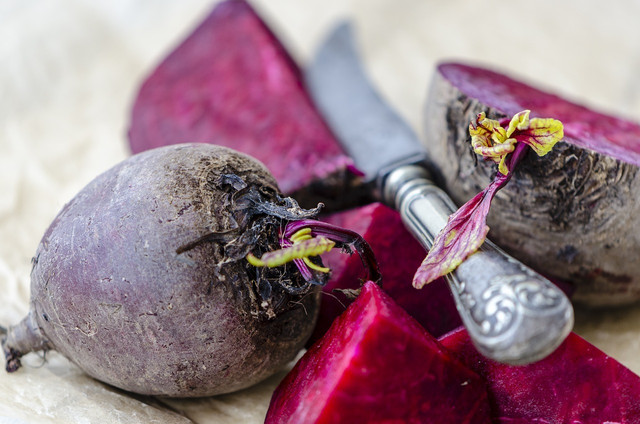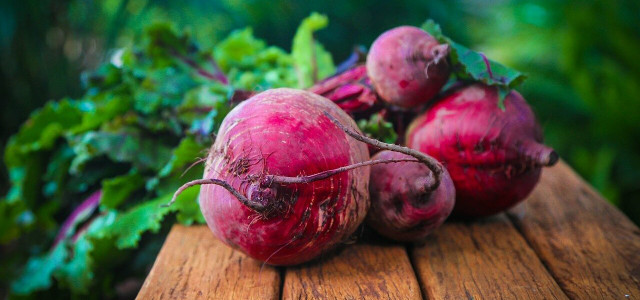We’ll take you right to the roots and tell you everything you need to know on how to plant beets, care for them, and harvest them right in your own backyard. Let's dig in!
When to Plant Beets

(Foto: CC0 / Pixabay / Couleur)
Fortunately, once you plant beetroots, you won’t have to wait long to harvest tasty beets. They usually take about two months to mature. On top of that, you can enjoy the edible green tops of the crop as well, meaning that no part of the plant gets wasted.
In terms of when to start your beets, early spring is best so start planning for April and May. Thanks to their remarkably quick yield time they can be planted every two to three weeks until mid-summer. Early sowings can even be potted in the late winter, although it’s much easier to sow seeds directly in the soil from April to July.
It’s not unheard of to plant beets up until August and early Fall, although bear in mind that the yield might not be as high. Typically, germination occurs in between five to eight days. If the soil is colder, it may take up to three weeks. If you wish to streamline this process, one tip is to soak the seeds in water 24 hours before you stick them in the soil.
Where to Plant Beets
To begin, all you need is well-prepared soil that drains well and a sweet spot in your garden that gets plenty of sunlight. For optimal results, find a spot that receives at least six hours of sunlight daily and doesn’t get too hot. As long as the temperature doesn’t exceed 75°F, you should be fine.
Beets tend to thrive in soil that’s at least 50°F. They require constant moisture but hate overwatering and dampness, which can lead to crop rot and diseases. So choosing a spot in soil that drains well but can hold water for a few days is key. Well-prepared, fertile soil with a neutral pH no lower than 6.0 is best to plant beets in.
Tip: You can also add organic matter such as compost and mulch to your soil to give your beets more nutrients and aid them in their growth.
How to Plant Beets Step-by-Step



(Foto: CC0 / Pixabay / TL-Pictures)
Ok, so you’ve picked out a perfect plot in your garden and all the elements are just right, now what? Here’s a straightforward and concise guide on how to plant beets:
- Plant your beetroot seeds roughly a ½ inch deep in the soil, and try to space them one to two inches apart in rows.
- After you’re done sowing your seeds, cover them in a thin layer of soil. If you’d like to help them from the get-go, you can also use organic matter like compost or mulch to ensure the soil’s chock-full of nutrients.
- Once your seeds are covered sufficiently, water well regularly. Keep the soil wet but be careful not to drown them, or you may risk damping and rot.
If you think these steps on how to plant beets are only applicable and useful only for someone with a large garden, you’re wrong. Beets can also be planted and grown in pots. Here’s how:
- Choose a pot that’s at least 8 inches in diameter as well as roughly 8 inches deep. Rounder varieties are better suited for these conditions.
- Fill the bottom of the pot loosely with soil, mulch, or compost. Stop when you’re nearly at the top.
- Next, sow your seeds gently across the surface of this fresh soil. Cover these seeds with roughly an inch of soil or compost. Seedlings can be thinned out once they reach an inch in height, should you desire.
- Be sure to place your pot somewhere that gets a lot of sunlight. Stay vigilant and water accordingly.
How to Take Care of Beets
A couple of useful tips for showing some love to your budding beets are as follows:
- Be gentle when handling the developing seedlings in the soil as they initially have very shallow roots that can be upset easily.
- Beetroots can be a thirsty lot, needing a lot to drink as they have to sustain those nutritious leafy greens on top. Water regularly, with one inch of water per square foot per week being ideal. Be careful not to overwater them.
- Nevertheless, keep an eye out for signs of wilting as this can easily happen on a hot day, and be mindful not to neglect freshly planted beets.
How to Harvest and Store Beets



(Foto: CC0 / Pixabay / Alexey_Hulsov)
- From the time that they’re the size of a golf ball, beetroots can be harvested from the soil. Most beet varieties can mature after 55 to 70 days of when they were first planted. Two months is a general rule of thumb, with some varieties taking up to 90 days to mature.
- It’s also possible to harvest some of the beets slightly earlier whilst leaving others in the soil. This encourages the remaining beetroot crops to continue growing as there’s less competition for space and nutrients in the beetroot beds. For the crops themselves, gently loosen the soil around the beet and gently pull upwards.
- Harvest your remaining beetroots before they get too large with a tough and woody texture. The size of a squash ball (1-2 inches) is ideal. Don’t fret, however, if they do grow quite woody, these can still be salvaged and pureed into a delicious dip or soup.
- Keep your beets fresher for longer by clipping their tops off (leaving about an inch). Beets can be stored in a refrigerator for between one to three weeks. Failing that, they can survive in a cold, moist space (40-50°F) for anywhere between one to three months. If you notice sprouting, this is a sign of decay so eat them quick, pickle them or freeze them, the choice is yours.
Tip: The leafy greens can be plucked anytime during your growing season and chopped up and added to a tasty salad. To remove them, twist the tops off with your hand and wash them. Once clean they can be cooked and eaten like spinach.
Health Benefits of Beetroot
Full-flavored and fresh with a deliciously earthy taste, beetroots are an incredibly resilient and rewarding vegetable to grow at home and a tasty addition to any diet. Whether you’re having them on their own, or as an appetizing side dish, beetroots enrich and enhance a variety of meals.
Believe it or not, before humans knew how to plant beets properly, they planted them only for their leafy green parts. Thankfully in time, they would discover that the beetroot plant is delicious and entirely edible. From the purple roots to the leaves and stems, no part of the plant gets wasted, making them all the more sustainable.
If that wasn’t enough the health benefits of beetroots alone is enough to make them worth your while. Beetroot plants are packed with vitamins and minerals, high in fiber, and crammed with nutrients. They’re rich in antioxidants that help fight cell damage and reduce inflammation. Studies have linked beetroot juice to promoting lower blood pressure and greater cardiovascular health. Beets also encourage helpful gut bacteria that aid digestion and boost the immune system.
lhttps://utopia.org/guide/can-you-eat-beets-raw-heres-what-you-should-know/`
How To Cook Beets



(Foto: CC0 / Pixabay / leppäkerttu)
In stark contrast to their mythical origins as an aphrodisiac in Ancient Greece, many young people have grown up with ill-formed notions about the taste of beetroots based on childhood experiences of supermarket beetroots in a can.
You may be forgiven for thinking pickled beets are the only way to go, but thankfully this isn’t the case at all. Beets can also be:
- Roasted,
- Boiled,
- Steamed,
- Fried,
- Dehydrated,
- Grilled
- Used as a natural food coloring,
- Pureed
- Made into hummus or a smoothie,
- Baked into treats like vegan red velvet cake
Be gentle when washing your beets for cooking, as it’s better to keep the thick skin on for cooking. Beets also pair well with chives, bay leaves, cloves, garlic, thyme, citrus, and mustard seeds.
Note: Be careful not to get the juice on your fingers as it can stain for a while. Should you get it on your fingers, you can help remove beet juice from your fingers by rinsing them with salt, lemon juice, before making sure to wash thoroughly with warm water and soap.
Read more:
- How to Grow Sweet Potatoes – All You Need to Know
- Cauliflower: Handy Tips on How to Plant, Grow, Harvest, and Eat it
- How to Ferment Vegetables: A Beginner’s Guide
- How to Harvest Rhubarb: Avoid These 5 Mistakes
Do you like this post?







